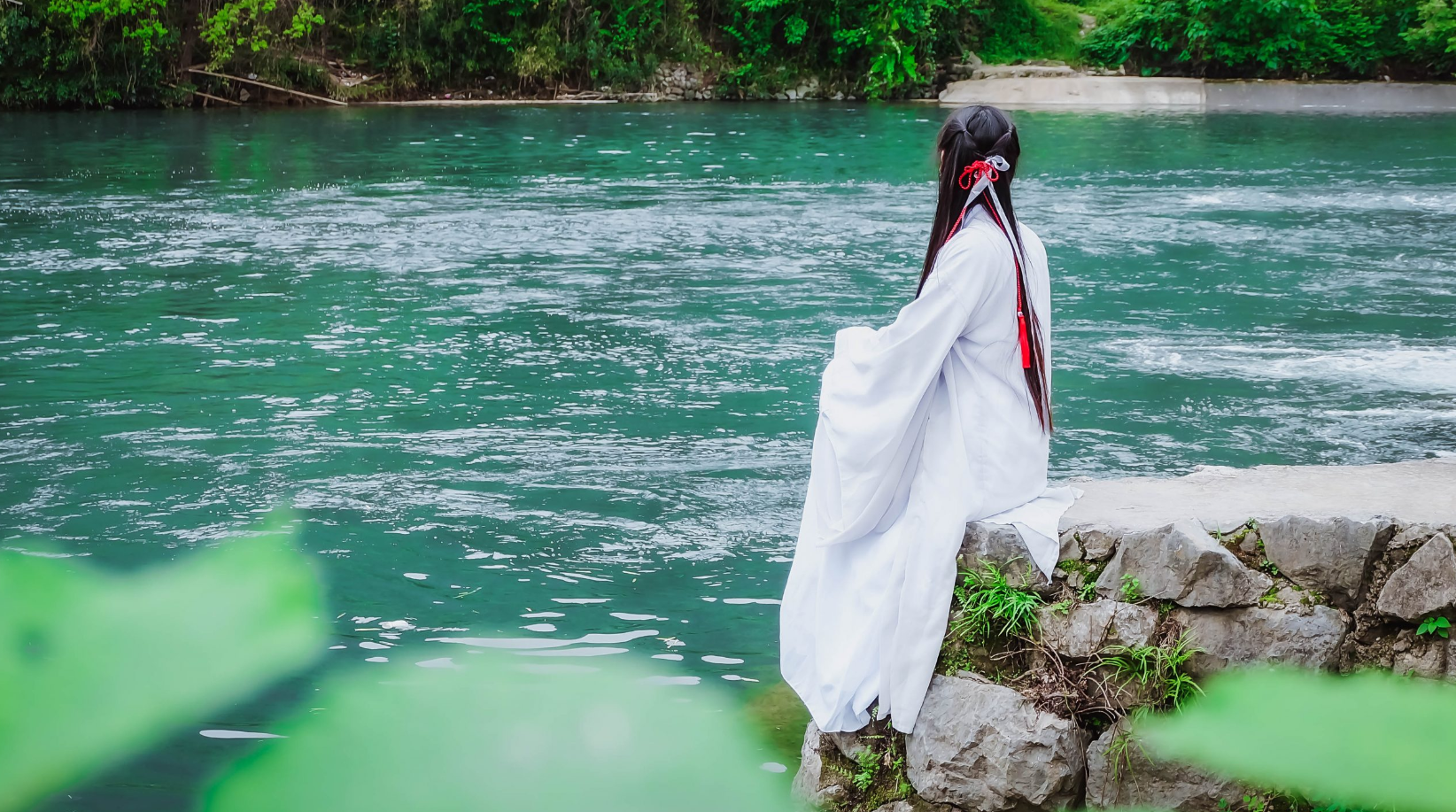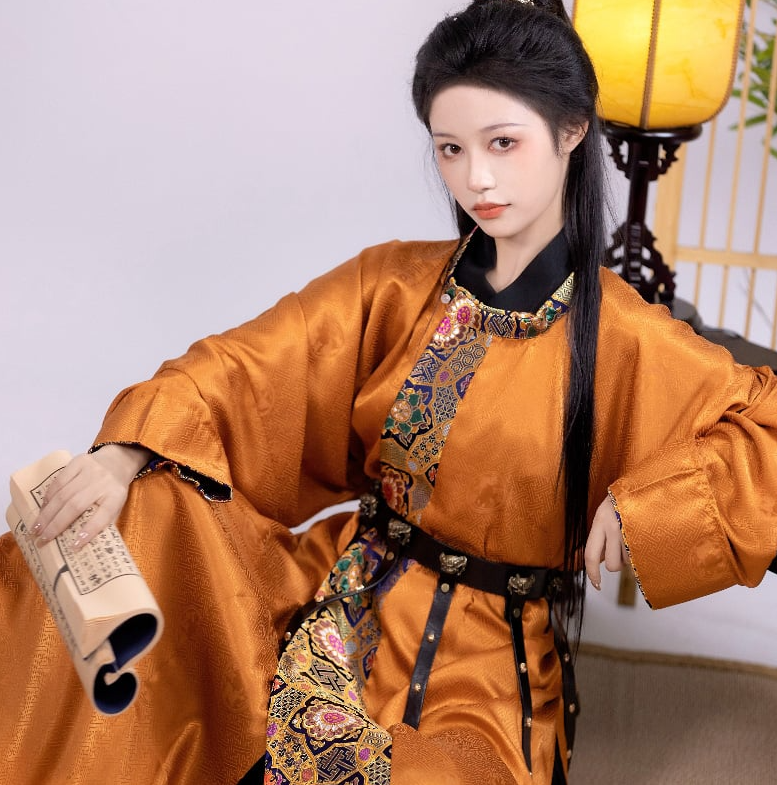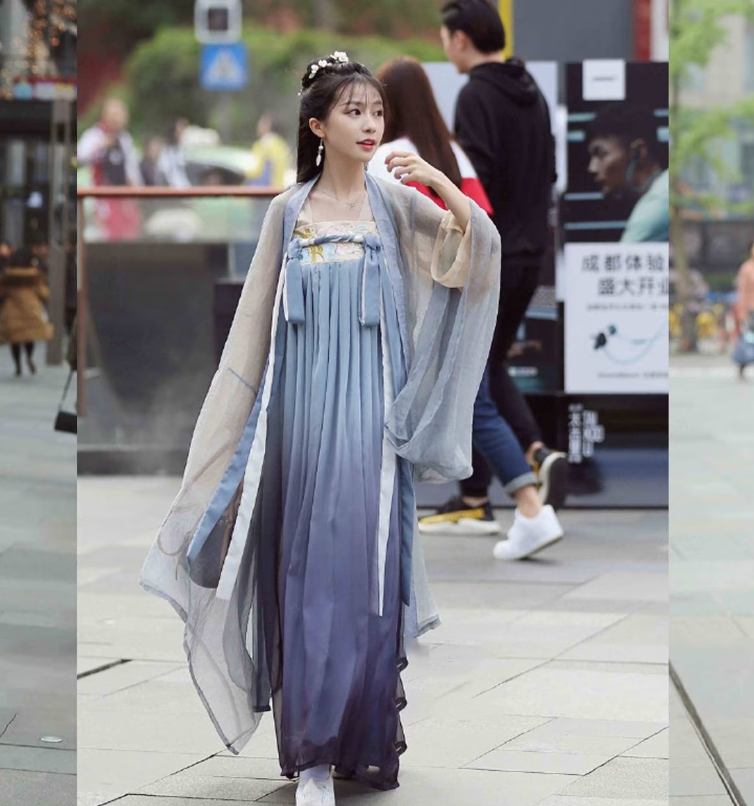Hanfu is unique for its deep-rooted history, diverse styles,It’s not just a garment b ut an embodiment of Chinese heritage.
Historical Significance
Ancient Roots of Hanfu
The history of Hanfu can be traced back to the early periods of Chinese civilization. Originating more than 3,000 years ago during the Xia, Shang, and Zhou Dynasties, Hanfu not only acted as clothing but also bore significant cultural symbols and etiquette norms. During these periods, the design of Hanfu was relatively simple but carried deep meanings, often related to social status and moral values. Rituals and ceremonies would also prescribe specific types of Hanfu to signify their importance.

Hanfu during Different Dynasties
As China went through various dynastic changes, from the Qin Dynasty to the Ming and Qing Dynasties, the styles and components of Hanfu evolved significantly. This fashion reflected the Tang Dynasty’s cosmopolitan culture and influence from foreign lands.
Preservation of Hanfu in Modern Times
Even though Western-style clothing has become prevalent in modern China, the significance of Hanfu remains intact. Several efforts are underway to preserve this ancient attire. Cultural organizations and Hanfu enthusiasts regularly host events, exhibitions, and workshops to promote the art of Hanfu. This resurgence in popularity also coincides with a broader wave of interest in traditional Chinese culture, including tea ceremonies, calligraphy, and Chinese opera. There are now online shops and physical stores dedicated solely to Hanfu, offering both traditional designs and modern interpretations.
Hanfu has a history dating back more than 3000 years, with the earliest forms emerging during the time of the Yellow Emperor. Different dynasties such as the Ming and Tang contributed unique styles, as detailed in the History of Chinese clothing.
Design and Components
Basic Structure of Hanfu
The basic structure of Hanfu often consists of a top piece and a bottom piece, typically a robe or a gown that crosses over the body from one side to the other. This asymmetrical design stands as a hallmark of Hanfu fashion. You’ll often see Hanfu with wide sleeves and flowing fabric, creating an aesthetic of elegance and fluidity. This style takes inspiration from natural elements and Daoist philosophy, where harmony and balance play pivotal roles.
Materials Commonly Used
In the past, Hanfu was primarily made from natural materials like silk, cotton, and linen. Silk, especially, was a popular choice due to its smooth texture and natural sheen, making it ideal for formal occasions and rituals. Nowadays, with advancements in textile technology, Hanfu incorporates more affordable and easily maintainable materials like polyester. However, purists still prefer the traditional materials and will often go to great lengths to source them.
Popular Styles and Variations
The Hanfu umbrella encompasses a range of styles that have evolved over the course of different Chinese dynasties. Some of the most popular styles include the Shenyi, a one-piece robe; the Ruqun, a top-and-skirt combination; and the Aoqun, a style that consists of a jacket and a pleated skirt. These styles can vary based on gender, occasion, and even seasons.
Most Hanfu garments use natural fibers like silk, cotton, and linen. The quality can vary greatly, with silk from Suzhou often regarded as high-end, costing upwards of $100 per yard.
Cultural Importance
Hanfu in Traditional Ceremonies
The attire is not only aesthetically pleasing but also fulfills ceremonial norms and regulations, often detailed in ancient texts like the Yi Li (Ceremonial Etiquette).
Symbolism in Hanfu Designs
Each component of Hanfu carries specific symbolic meanings that can range from signifying a person’s social status to embodying philosophical or religious themes. These designs serve as a visual language that communicates values like bravery, nobility, and purity.
Influence on Modern Chinese Fashion
The impact of Hanfu extends into modern Chinese fashion and even influences global fashion trends. Today, many young Chinese are revisiting Hanfu as a form of self-expression and as a way to connect with their cultural roots. While Western styles dominate everyday wear, the elements of Hanfu can be seen in special collections released by Chinese designers during fashion weeks. These modern renditions often blend Hanfu’s traditional elements with contemporary design, creating a unique fusion that pays homage to history while looking forward. In doing so, Hanfu continues to be a cultural cornerstone and a source of inspiration for new generations interested in Chinese culture.
Role in Chinese Festivals
Hanfu in Lunar New Year
The Lunar New Year, also known as Spring Festival, is one of the most important traditional festivals in China, and Hanfu plays a significant role in the celebrations. People often wear Hanfu to temple fairs, family gatherings, and even public celebrations. The colors of these garments are usually vibrant, primarily featuring red, as it symbolizes good luck and prosperity. Embroideries with motifs like dragons and phoenixes are common, signifying wishes for an auspicious year ahead.
Wearing Hanfu during Mid-Autumn Festival
The Mid-Autumn Festival is another occasion where Hanfu makes a grand appearance. This festival is about family reunion and honoring the moon, and people frequently dress in Hanfu to add a cultural layer to the celebration. The traditional garment complements the other quintessential aspects of this festival, such as mooncakes and lanterns. The Hanfu worn during this festival often features patterns of the moon, clouds, or rabbits, which are symbols closely associated with the Mid-Autumn Festival.

Other Festivals Where Hanfu is Prominent
Hanfu is not limited to just the Lunar New Year or the Mid-Autumn Festival; it’s a staple in various other traditional celebrations like the Dragon Boat Festival and the Qingming Festival. During the Dragon Boat Festival, for example, participants in the dragon boat races may wear Hanfu-inspired athletic wear, incorporating ancient elements into a modern sport. On Qingming Festival, when people go tomb-sweeping to honor their ancestors, Hanfu serves as a fitting tribute to historical customs and traditions.
Contemporary Revival
The Hanfu Movement
The Hanfu movement is a cultural and social phenomenon that has gained traction especially among young people in China. This movement aims to revive the wearing of Hanfu and the values it represents. Social media platforms and online forums act as the backbone of this resurgence, where enthusiasts share their Hanfu experiences, tips for styling, and even history lessons related to Hanfu. Groups organize events such as Hanfu flash mobs, traditional ceremonies, and even fashion shows to promote awareness and appreciation of this ancient attire. This modern revival helps to make Hanfu accessible to everyone, not just cultural aficionados or historians.
Hanfu in Pop Culture
Celebrities often don Hanfu during public appearances, helping to popularize the clothing style among their followers. These media portrayals have a symbiotic relationship with the Hanfu movement, each fueling the other’s popularity. Even Chinese pop music has seen artists wearing Hanfu as a part of their stage attire, blending the traditional with the modern in a visually appealing manner.
Influence Beyond China
The popularity is not confined within China’s borders. Thanks to the global reach of the internet and pop culture, people from various parts of the world have begun to take an interest in Hanfu. Some international fashion designers incorporate elements into their collections, while cultural festivals in different countries sometimes feature Hanfu as a representation of Chinese heritage. Educational institutions outside of China, from primary schools to universities, include in their cultural exchange programs, using it as a tool to educate students about Chinese history and culture.
The Art of Wearing Hanfu
Proper Etiquette
Wearing Hanfu isn’t just about throwing on a robe; there is a distinct etiquette that accompanies this traditional attire. For instance, the right side of the robe should overlap the left, which is a practice rooted in Confucian ideals of propriety. These nuances often extend to how one should walk, sit, and even interact with others while wearing Hanfu. Traditional ceremonies often have strict guidelines about what style and color of Hanfu are appropriate for the occasion. Understanding these etiquettes elevates the act of wearing Hanfu from mere fashion to a respectful participation in Chinese culture.

Matching Accessories
The elegance can be amplified with the right accessories. Traditional Chinese accessories like silk fans, tasseled hairpins, and embroidered shoes often accompany . These accessories are not just decorative; they also bear significant symbolic meanings. For example, a jade pendant can signify purity and moral integrity. When wearing , consider the occasion and choose accessories that not only match your outfit but also align with the cultural or historical theme you aim to represent.
DIY : Making Your Own
For those deeply interested , making your own garment can be an enriching experience. Creating a Hanfu involves more than sewing skills; it requires a deep understanding of the fabrics, colors, and patterns that resonate with the historical and cultural essence of the attire. Websites, forums, and social media groups dedicated to often provide detailed guides and tutorials. These resources can help you select the right material, teach you about traditional sewing techniques, and even guide you through the intricate art of embroidery. It’s a fulfilling way to engage deeply with Chinese textiles and handicrafts.
Hanfu vs. Other Traditional Dresses
Comparison with Qipao
Many people mistake Hanfu for Qipao, but the two are distinct forms of traditional Chinese attire. Qipao originated from the Manchu people and became popular during the Qing Dynasty. It is a fitted, one-piece dress that usually falls to the knees or lower, quite different from the loose, flowing robes of Hanfu. While can be made from a variety of materials and comes in various styles, Qipao is more standardized in its design and often made from silk. In cultural context, links to the broader Han Chinese identity, whereas Qipao has strong associations with modern Chinese history, specifically the 20th century. Both have their own etiquettes and occasions where they’re considered appropriate, making each unique in the scope of Chinese clothing.
Comparison with Kimono and Hanbok
When looking at traditional East Asian attire, Hanfu often gets compared with Japan’s Kimono and Korea’s Hanbok. While all three have historical roots and similar functionalities, there are noticeable differences in design, material, and cultural significance. Hanfu, on the other hand, has a broader range of styles and materials, making it versatile for different occasions and climates. However, what sets Hanfu apart is its influence on both Kimono and Hanbok, as it predates them and has historical links to attire in various parts of Asia.
Unique Features of Hanfu
Hanfu stands out for its diversity in styles, which can differ based on time periods, regions, and even specific events. Whether it’s the ‘Shenyi’ that was prominent during the Zhou Dynasty or the ‘Ruqun’ often seen in the Tang Dynasty, each style has its own set of features like collar shapes, sleeve types, and garment lengths.Hanfu also has its unique set of accessories and accompanying etiquette, which makes it a deeply rooted expression of Han Chinese culture.